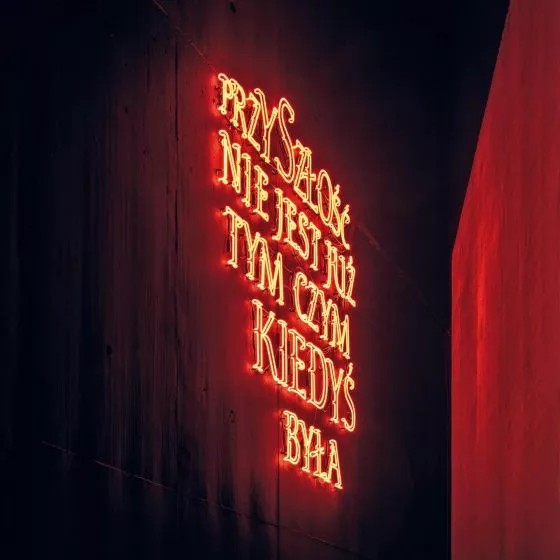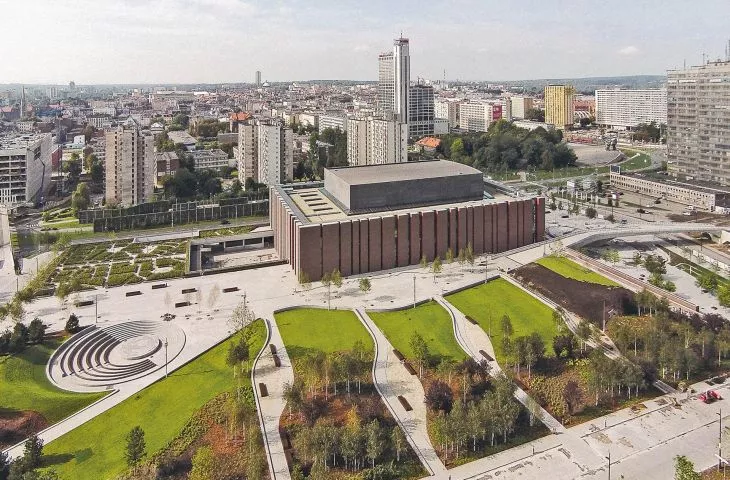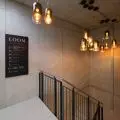From the archives of A&B - the best Polish projects of the last decade
[A&B 02'2015 original material]
Małgorzata Tomczak talks about music, architecture and passion with Tomasz Konior of the Katowice-based Konior Studio.
Malgorzata Tomczak: You are the author of the second building dedicated to music. Interestingly, the second one in Katowice. So it seems that you have become a monopolist in this subject [laughter]. How did your experience with the Symphony influence your conceptual work on the NOSPR?
Tomasz Konior: Katowice is famous for music, and yet until eight years ago it did not have a single space specifically designed for it. Now the capital of Upper Silesia is catching up. The excellent Academy of Music and one of Europe's best orchestras have finally lived to see proper conditions for work and concerts. In addition, two more venues have recently been built in Katowice that also serve music: a completely reconstructed hall at the Youth Palace and the Silesian Philharmonic, expanded as a result of a competition. So it's hard to talk about a monopoly - rather, it's a coincidence that, being "here and now," I can actively participate in building in my own city and fulfill the dream of permanently combining my two greatest passions: music and architecture. Symphony was the first fully musical project in Katowice, specific for many reasons.
In the competition, we took the risk of boldly combining the new with the old, and in the implementation - a concert hall with variable acoustics. I think we didn't fully realize the risks. In the end, the facility safely endured learning "from its mistakes." It built awareness and gave invaluable experience, which doesn't mean that it made things easier with the NOSPR. The scale and complexity of the two projects do not stand up to comparison, but I must admit that without the Symphony, there would be no NOSPR. Executing such a unique project in the realities of Polish public procurement requires a close-knit team, extraordinary talents, resilience and luck. It seems to me that among the hundreds of problems solved every day, one basic question must be continually posed: how to make architecture and music sound a synergy of impressions during each concert. The answer is known to few. Today we already know that in the case of the NOSPR it has been possible to combine acoustics with the unique atmosphere of the venue. The best proof of this is the crowds at concerts. Tickets have to be obtained many months in advance.
longitudinal section
© Konior Studio
Margaret: One of the biggest advantages of the NOSPR is its variable acoustics. This was a bold experiment, the results of which are difficult to predict at the concept level. Can you tell us how the collaboration with Yasuhisa Toyota of Nagata Acoustic came about, and how you worked out the model whose effects music lovers can experience during the concert?
Thomas: In the end, we abandoned the concept used in the Symphony, the so-called box-in-box and reverberation chambers, which allow you to lengthen and shorten the reverberation time. This is a conscious decision, the result of many analyses and events. One of them was the fact of meeting Krystian Zimerman. Our acquaintance began after his concert just in the Symphony hall. He was fascinated by the place, and I was fresh from winning the NOSPR competition. I remember endless conversations about acoustics and architecture. Krystian became the good spirit of the project. We had been to many musical venues together, and I was able to study their advantages and disadvantages, and during rehearsals listen to his playing on the instrument, which he says is the concert hall. Once in Tokyo, he met me with the world's most respected acoustician. We were already well advanced with the NOSPR project when Yasuhisa Toyota joined the team. That's when we changed the concept of the grand concert hall for the third time. In total, as many as five were created. I aimed for a space in which a centrally located stage and surrounding audience would enhance the sense of musicians and music lovers experiencing a concert together. I wanted to achieve a synergy of sensory perceptions of the venue. After the fourth version, we built a 1:10 scale acoustic model, which was a faithful reproduction of the future hall in both proportions and furnishings. One thousand eight hundred dolls were seated in the audience! After three sessions of testing, we made the final adjustments, and it can be said that the construction was already "just" materializing dreams, and the tuning of the hall during the first rehearsals was limited to discussions about the positioning of the orchestra on the stage.
The grand concert hall is located in the heart of the NOSPR, a kind of building within a building
Photo: Daniel Rumiancew © Konior Studio
Malgorzata: How did the acoustic design affect the interior of the main concert hall?
Tomasz: There is no architecture without acoustics and vice versa. It's a full synergy. There was no situation where the acoustician imposed any solution on the architect. On the contrary. Yasuhisa kept saying: you design the architecture, the climate of the space for music depends on it, and I invent acoustics for it. And that's how it worked in practice, both during design and construction.
Malgorzata: In addition to the grand concert hall, there is a chamber hall at the NOSPR for about three hundred people, and all the facilities necessary for the functioning of the building. How did you come up with the concept for the interior architecture, and how does it influence the exterior form of the building?
Thomas: The plan is extremely simple - thus clear and pragmatic. However, it creates a unique richness of places shaped in a layered way, using a variety of stimuli for a variety of experiences. I searched for a city in this premise. I came to the conclusion that I would also try to find it in the building. Hence the language of urbanism used: street, frontage, arcade, richness of functions, forms, materials, textures perceived by the senses. From bright, cool and noisy places to dark, warm and quiet ones. I compare the whole to a meeting. And to it is subordinated the system of interrelationships contained in one another. At the interface with the city is the skin of the building - eighty pillars, which, by spreading apart, let people and light into the interior.
PLAN
© Konior Studio
The skin allows the building to breathe, because inside each of the pillar-pillars there are installations - mostly noisy ones, which makes it quiet inside. In the ring, at the junction with the skin are rooms for musicians, a kind of multifunctional ring that houses all the functions necessary in the daily work of the orchestra. Almost four hundred rooms. The ring surrounds an atrium - a world of music lovers that fills with life before and after concerts.
Repeating a successful procedure from the Symphony - two entrances located on two opposite elevations make the interior of the atrium a pedestrian walkway. During the day, one can walk through the building, taking advantage of its attractions: restaurants, bookstores, exhibitions held there. The concert hall is located in the heart of the establishment. It is a building within a building. Symbolic and legible in content and form, the most important space. The goal to which both musicians and music lovers strive. There the most important meeting takes place: for and around music.
A fragment of the NOSPR's facade among the Silesian urban landscape
Photo: Daniel Rumiancew © Konior Studio
Malgorzata: The façade and the formal expression of the building are part of a typically Silesian context. What is the dialogue of the new building dedicated to high art with the traditional architecture, which was mainly made up of miners' houses?
Thomas: I love brick. It's a material from here. I find it appropriate and interesting to continue the Silesian building tradition. This way we have no doubt where the building was built. NOSPR evokes echoes of the magical Nikiszowiec with its red colored window recesses. Glistening with different shades, the facades were obtained from mixing six types of brick fired in a 19th century kiln. The twofold process of heat treatment using ceramic clay with appropriately selected color, as opposed to traditional paint painting, made it possible to achieve a much more durable red coating. "Vibrating" method of laying, worked out on site gives unique effects in contact with changing light during the day and illumination at night.
NOSPR - exterior view
Photo: Daniel Rumiancew © Konior Studio
Malgorzata: The NOSPR is part of Katowice's Cultural Zone. How does it affect its immediate surroundings?
Tomasz: We were tasked with developing four hectares of the former timber yard after the former mine, which is now being transformed into a new neighborhood. Thus, the building's surroundings for binding the new space to the city became as important as the building itself. Hence a lot of concern for content and for form. I wanted people to like the place, to visit it in large numbers not only on the occasion of concerts. We planted four hundred and fifty trees, created lawns, fountains, paths and benches for spending time in the gardens of the NOSPR. The amphitheater is another attraction, and the labyrinth, for which we found inspiration in the 1926 plan of the great city of Katowice, is an allusion to modern urban planning, the effects of which we can observe from an elevated terrace.
Above the entrance plaza we stretched a reinforced concrete footbridge, which allows free movement on foot or by bicycle along the entire Cultural Zone. As we found out in time, back in autumn the idea was accepted by residents, filling the new place with all kinds of activity. I still see walkers, skateboarders, whole families and young couples arranging photo shoots. It makes me very happy that people accept the architecture.
A view of the communications and spectacular atrium of the NOSPR
Photo: Daniel Rumiancew © Konior Studio
Malgorzata: After winning the competition, there were rumors of collaboration with Patrick Blank and hanging gardens. Have you been able to make this a reality?
Tomasz: It started out ambitiously. Visits, talks, exchange of ideas. We also invited other artists to collaborate on the project. However, money, or more precisely the lack of it, stood in the way. Anyway, we finally came to the conclusion that having a four-hectare living garden, we could satisfy the need for contact with nature and do without hanging gardens. Only on the side of the southern elevation, the lack of trees caused by underground infrastructure will soon be compensated for by a green mantle of vines, which with their seasonal variation will cover the brick body.
Margaret: Thank you for the interview!
































































